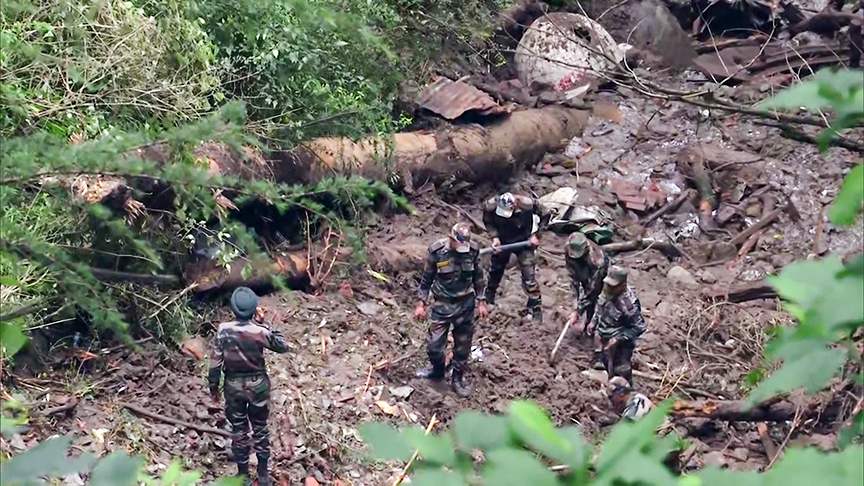Officials are studying the Swiss early warning system for landslides which is one of the most advanced in the world.
New Delhi
Looking to help landslide-hit states like Himachal Pradesh and Uttarakhand, the Central government is planning to scale up road-protection structural measures such as improved retaining walls and drainage based on a system globally popularised by Switzerland. This will be in addition to a new draft policy to be proposed for the creation of physical barriers to minimise damage to road infrastructure due to landslides in hilly areas.
As part of using the best technologies to minimise damage to road infrastructure, road transport and highways, ministry officials are studying the Swiss early warning system for landslides which is one of the most advanced in the world. “Warnings are issued on the basis of data captured by sensors that closely monitor ground movements and weather conditions,” said an official.
Special five-metre-long glass fibre bolts made in Switzerland are also likely to be used to bind together weak rocks that disintegrate easily to cause landslides. “Each Swiss bolt costs around Rs 5,000,” said an official, adding that these fasteners are extensively used in the West in traffic engineering. At a time when road transport minister Nitin Gadkari has rushed teams to rain-hit hill states to assess the damage to roads due to incessant rains over the last week, officials said concrete roads may be popularised in heavy-rain areas to withstand nature’s fury. Help for rebuilding damaged roads is also likely to states and this will be in addition to Rs 400 crore released for Himachal earlier this month from the Central Road and Infrastructure Fund for rebuilding roads damaged in landslides.
While following the Swiss model, the Centre, along with state governments, is also going to focus more on non-structural measures to prevent landslides such as land-use planning and education of area residents to reduce the risks and protect lives and property. An official said apart from mitigation steps, the Swiss government invests heavily in research and development into landslide prevention and mitigation. This research helps to improve the understanding of landslide processes, and to develop new and more effective prevention measures. This investment in R&D has helped make the Swiss system for tackling landslides one of the most effective in the world.
The Swiss invest heavily in detailed understanding of the geology, geomorphology, and hydrology of their country. This information is used to identify areas that are prone to landslides, and to assess the likelihood and consequences of a landslide event, said a top MoRTH official.
Early in the week, Uttarakhand’s Rishikesh recorded 42 cm rain in 24 hours, the highest in the country in August so far. It was followed by Kangra in Himachal Pradesh which received 27 cm rain in one day. The India Meteorological Department had issued a “red alert” in both the hilly states over last weekend.
According to Himachal Chief Minister Sukvinder Singh Sukhu, over 55 deaths have been reported due to heavy rain since last Sunday. Hamirpur, Shimla, Solan and Mandi have faced most of the brunt of recent cloudbursts. According to officials, there are about 17,120 landslide-prone sites in the state, of which 675 are near critical infrastructure and habitations.

